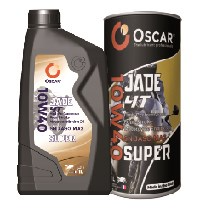
Proper lubricant dispensing is important for maintaining the efficiency and longevity of industrial machinery. Effective dispensing practices prevent over-lubrication, under-lubrication, and contamination, which can lead to equipment failures and increased maintenance costs. Implementing best practices for industrial lubricants dispensing ensures optimal performance and reduces operational downtime. Explore here some key practices to follow for effective lubricant dispensing.
Use the appropriate lubricant:
Selecting the appropriate lubricant for your machinery is fundamental. Different machines require specific types of lubricants based on factors such as operating conditions, load, and temperature. Always refer to the manufacturer’s specifications and recommendations when choosing a lubricant. Using the correct type and grade of lubricant ensures that the machinery operates efficiently and is protected against wear and tear.
Maintain cleanliness:
Contamination is a major cause of lubricant failure and machinery damage. Ensure that all dispensing equipment, containers, and tools are kept clean and free of contaminants. Use clean, dedicated dispensing systems for each type of lubricant to avoid cross-contamination. Regularly inspect and clean lubricant storage tanks and dispensing equipment to maintain a contamination-free environment.
Implement accurate measurement:
Accurate measurement is essential to avoid over-lubrication or under-lubrication. Implement automated dispensing systems that can precisely measure and deliver the correct amount of lubricant. These systems can reduce human error and ensure consistent application. For manual dispensing, use calibrated measuring tools and follow established procedures to ensure accurate quantities.
Follow proper application techniques:
Applying the lubricant correctly is as important as choosing the right product. Follow the manufacturer’s guidelines for application methods and intervals. Use the appropriate tools, such as grease guns or oil dispensers, and apply the lubricant to the designated points. Avoid excessive application, which can lead to lubricant leakage and attract contaminants.
Monitor and track lubricant usage:
Keep track of lubricant usage and maintenance schedules to optimize dispensing practices. Implement a monitoring system to record the amount of lubricant used and the frequency of application. This data helps in identifying patterns, predicting maintenance needs, and making informed decisions about lubricant usage. Regularly review and adjust dispensing practices based on this information to improve efficiency.
Proper training for personnel involved in lubricant dispensing is important. Ensure that all staff members are knowledgeable about the types of lubricants used, the correct dispensing procedures, and the importance of maintaining cleanliness. Training should also cover safety protocols and emergency procedures in case of spills or accidents.




